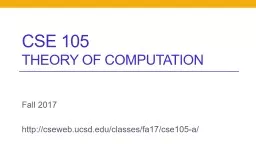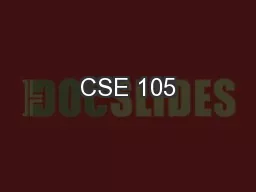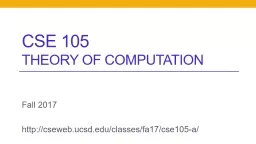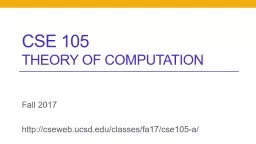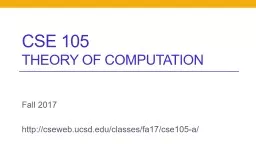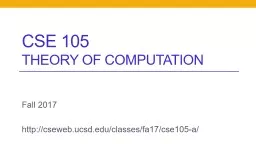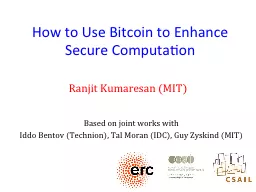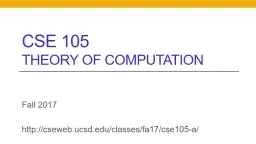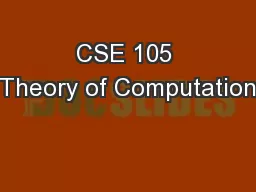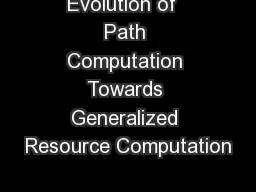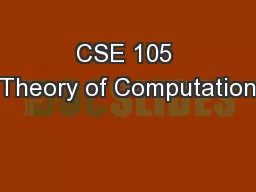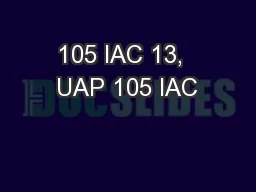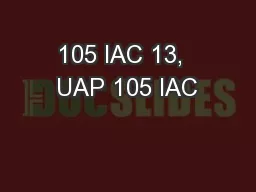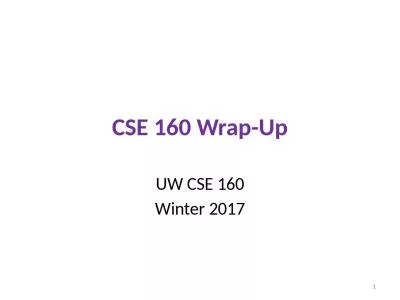PPT-CSE 105 theory of computation
Author : tatyana-admore | Published Date : 2018-02-06
Fall 2017 httpcsewebucsdedu classesfa17cse105a Todays learning goals Sipser Ch 31 32 Design TMs using different levels of descriptions Give highlevel description
Presentation Embed Code
Download Presentation
Download Presentation The PPT/PDF document "CSE 105 theory of computation" is the property of its rightful owner. Permission is granted to download and print the materials on this website for personal, non-commercial use only, and to display it on your personal computer provided you do not modify the materials and that you retain all copyright notices contained in the materials. By downloading content from our website, you accept the terms of this agreement.
CSE 105 theory of computation: Transcript
Download Rules Of Document
"CSE 105 theory of computation"The content belongs to its owner. You may download and print it for personal use, without modification, and keep all copyright notices. By downloading, you agree to these terms.
Related Documents

